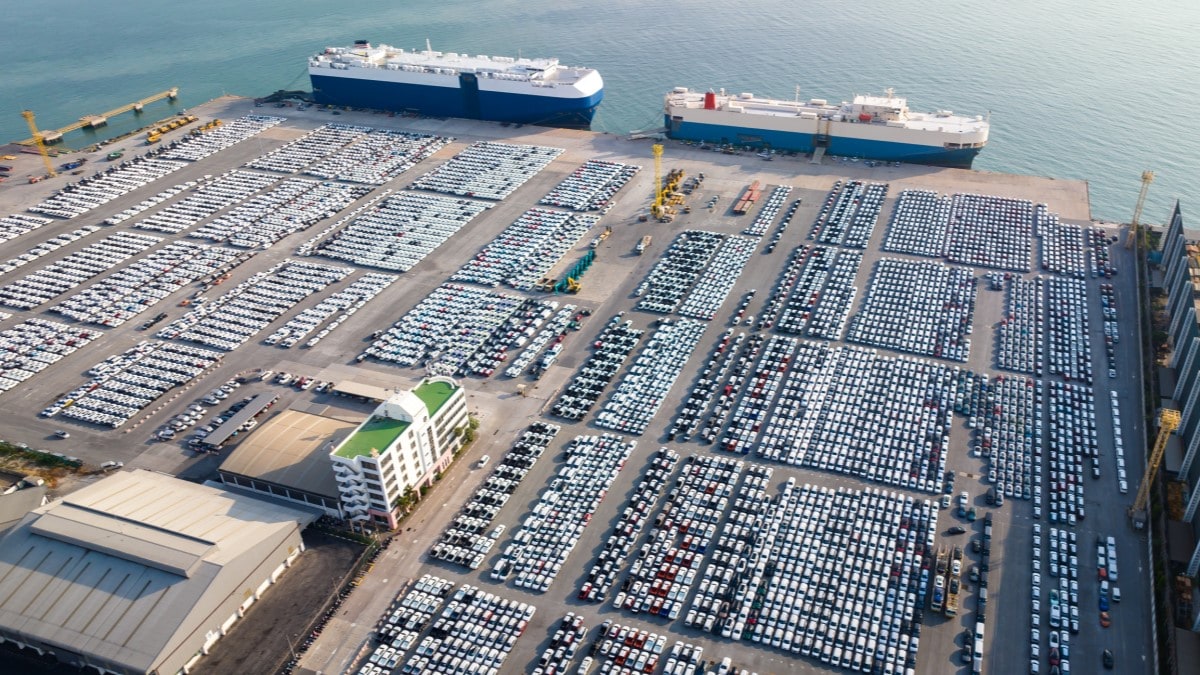At the last minute, car shoppers got some reasonably good news. Newly inaugurated President Trump enacted tariffs of 10% on all goods coming into the U.S. from China but delayed 25% tariffs on Canadian and Mexican goods for 30 days. The tariffs were widely expected to dramatically raise the price of every new car. Delaying them buys car shoppers time.
Related: Trump Tariffs Have Some in Auto Industry Fearing Collapse
China Tariffs Will Have Some Impact on Car Prices
A tariff war with China will raise prices for drivers, but not as much as a tariff war with most of North America would have. That’s true for two reasons.
Some Cars Come From China
One is that America imports few finished cars from China. The tariffs would inflate their prices by 10%. But, with fewer of them on sale, automakers might be more financially able to absorb some of that hit without passing costs on to buyers than they would have been with more extensive tariffs on Canada and Mexico.
American automakers import a handful of cars from China – notably GM’s Buick Envision, Ford’s Lincoln Nautilus, and a few cars from Volvo and its Polestar EV spinoff.
But last month, on its way out the door, the Biden administration pushed through a ban on Chinese-derived software in cars. That, along with a 100% tariff on Chinese EVs, already had automakers moving to import fewer cars from China to the U.S. Volvo even delayed the arrival of its planned EX30 small SUV to move construction from China to Europe.
Many Cars Use Chinese Parts
The second is that, though many car parts come from China, they tend to cross the U.S. border only once.
Many cars built in Europe and North America use at least some Chinese parts. American University conducts an annual study to find the “most American cars.” Even its winner — the Tesla Model 3 — uses some seats and dashboard components sourced from China. Those will cost Tesla 10% more now.
However, parts often pass back and forth over the Mexican and Canadian borders multiple times as they are assembled into larger units. That’s not true of Chinese parts.
Chinese parts are, however, significant in the aftermarket repair industry.
Mexico, Canada Tariffs Would Have Larger Impacts
Trump’s threatened 25% tariffs on Canadian and Mexican goods would have a much more significant impact.
Reuters explains, “There was relief in Ottawa and Mexico City after both Canadian Prime Minister Justin Trudeau and Mexican President Claudia Sheinbaum said they had agreed to bolster border enforcement efforts in response to Trump’s demand to crack down on immigration and drug smuggling. That would pause 25% tariffs due to take effect on Tuesday for 30 days.”
Some automakers get more than a third of their U.S. inventory from Mexican and Canadian factories. Virtually every car built in the U.S. uses Mexican and Canadian parts, many of which would be taxed multiple times as they cross borders.
Several analysts have concluded that the 25% tariffs would raise the price of the average car by about $3,000, and some vehicles would see their prices rise by as much as $10,000.
That worry is paused for now. Trump has not rescinded his tariff threat. He has delayed it until March 1. That has many in the auto industry holding their breath, waiting for March.
Reuters reports, “Some suppliers have already added a ‘tariff fee’ on the invoice to automakers in preparation for the policy shift, said Dan Hearsch, an auto industry analyst with AlixPartners. Germany’s ZF, a major supplier with 13 Mexico sites making everything from suspensions to brakes and steering wheels, said it was discussing with automakers how to absorb tariff costs and expected that car buyers would share the pain.”
Prices could still rise quickly in March if the tariff threat reemerges.
Should You Buy Quickly?
The China tariffs mean new car prices will rise, but not as severely or as quickly as they will if Trump enacts his tariffs on Canada and Mexico next month.
Used car prices will likely also rise as higher prices push more would-be new-car shoppers to used lots.
Still, buyers shouldn’t feel rushed into a major spending decision by the headlines. Yesterday’s dramatic headlines remind us all that brinkmanship is part of every tariff war. Threats may well re-emerge in less than a month. But tariffs can be negotiated away as quickly as they arise.
If you already plan to buy a new car early in 2025, it may make sense to shop in February before the threat of much higher prices becomes real. But, if you weren’t planning to car shop, the tariff reprieve isn’t a sign to spend tens of thousands of dollars in a hurry.
Shoppers should also keep a close eye on the credit market. Loan standards may tighten in 2025 as the Federal Reserve pauses its rate-cutting campaign.








